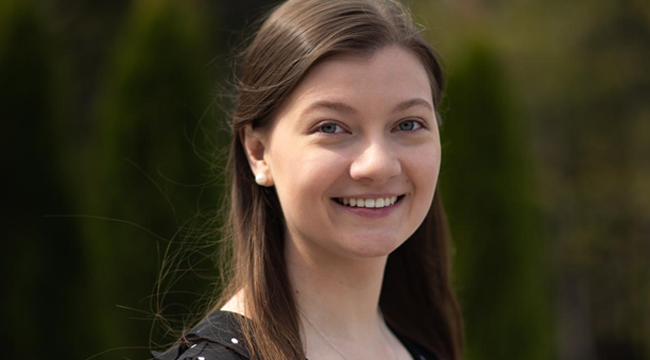Lay Science Writing Competition Winner: What does it take to make a life-saving drug?

When you think of proteins, you probably think about chicken, steak, or that new tofu dish your friend made. If I’m lucky, you think about those tiny molecules that your teacher mentioned in biology class. My work is all about those tiny molecules.
In my lab at the Centre for Blood Research, I spend my days (and nights) making proteins and testing them to see if they have what it takes to bust up a blood clot and save a life. It’s a long road to get from a test tube to a treatment, and it involves a lot of questions.
The first question is: What do we want our drug to do?
Heart attacks and strokes are the leading causes of death worldwide and usually involve a clot, which blocks the flow of blood. If we want to bust those harmful clots, we might want to use a drug that initiates or accelerates the normal clot-busting process. For that, it’s best to mimic a protein that is already in our blood. In my case, I went with a protein called clotting factor X, which is normally part of the clot formation cascade, but has a surprising and contradictory second function as an accelerator of the clot-busting process.
The second question is: How do we capitalize on that clot-busting function?
A protein like factor X has two roles in the body; first, it’s involved in the formation of a blood clot, and second, it’s involved in clot busting. Different signals tell factor X what role it needs to be in, or what hat it needs to wear, depending on the body’s needs. If we only want factor X to wear the clot busting hat, we need to start at the very beginning and edit the protein’s DNA. We need to make changes to the protein’s blueprint that say “you only get one hat”. Once we have our new blueprint, it’s time to give it to the construction workers.
The third question is: How do you build a protein?
In our lab, we have colonies of cells, minus the hard hats and reflective vests. Just like they do in our body, cells in a petri dish or fancy flask can grow and divide and make proteins. We can collect those proteins, purify them, and even run experiments to prove that they’re the proteins that we want. Then, we can test them.
The fourth question is: How do we know if our drug is any good?
In my lab, I test mutated factor X in test tubes and in mice. I have to make sure that it can’t remove its clot-busting hat and accidentally make a clot, and I have to make sure that it can speed up the clot-busting process.
If my drug works, I could fill a major gap in patient care and save thousands of lives each year. It’s a pretty fulfilling job.
My question to you is: When will you start your scientific journey?
About the author:
Alexandra Witt is a first year Masters student under the supervision of Dr. Ed Pryzdial at the University of British Columbia's Centre for Blood Research. Her project revolves around the creation of a new drug to bust up the blood clots that cause heart attacks and strokes. Alexandra joined the Canadian Blood Services lay writing competition as a means to creatively explain her graduate work to her friends, family, and the greater Canadian Blood Services’ community.
Read this story on the Centre for Blood Research’s blog post.
Canadian Blood Services – Driving world-class innovation
Through discovery, development and applied research, Canadian Blood Services drives world-class innovation in blood transfusion, cellular therapy and transplantation—bringing clarity and insight to an increasingly complex healthcare future. Our dedicated research team and extended network of partners engage in exploratory and applied research to create new knowledge, inform and enhance best practices, contribute to the development of new services and technologies, and build capacity through training and collaboration. Find out more about our research impact.
The opinions reflected in this post are those of the author and do not necessarily reflect the opinions of Canadian Blood Services nor do they reflect the views of Health Canada or any other funding agency.